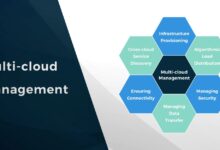Cloud Server Management: 10 Powerful Strategies for 2024
Managing cloud servers isn’t just for tech giants anymore. Whether you’re a startup, SMB, or enterprise, understanding cloud server management is key to scaling efficiently and securely. Let’s dive into the essentials and beyond.
1. Introduction to Cloud Server Management

Cloud server management refers to the processes, tools, and strategies used to maintain, monitor, and optimize cloud-based servers. As businesses increasingly migrate to the cloud, the need for effective management becomes more critical.
1.1 What is Cloud Server Management?
Cloud server management encompasses everything from provisioning and configuration to monitoring and maintenance of cloud servers. It ensures that cloud infrastructure runs smoothly, securely, and cost-effectively.
- Provisioning virtual machines (VMs)
- Monitoring server performance and security
- Managing cloud storage and networking
“Cloud computing is not the future. It’s the present.” – Satya Nadella, Microsoft CEO
1.2 Importance in Modern IT Infrastructure
Cloud server management plays a pivotal role in modern IT operations. It enables:
- Scalability without physical hardware limitations
- Cost optimization through pay-as-you-go models
- Improved uptime and disaster recovery
2. Key Components of Cloud Server Management
To manage cloud servers effectively, you need to understand its core components. These include infrastructure, automation tools, security protocols, and monitoring systems.
2.1 Infrastructure as a Service (IaaS)
IaaS provides virtualized computing resources over the internet. Major providers include:
2.2 Automation and Configuration Tools
Automation tools streamline server management tasks. Popular tools include:
- Terraform for infrastructure provisioning
- Ansible, Puppet, and Chef for configuration management
- Kubernetes for container orchestration
2.3 Monitoring and Logging
Monitoring tools help track server health and performance. Examples:
- Prometheus and Grafana for real-time metrics
- ELK Stack (Elasticsearch, Logstash, Kibana) for logs
- Datadog and New Relic for full-stack observability
3. Cloud Server Security Best Practices
Security is a cornerstone of cloud server management. Without robust protection, your infrastructure is vulnerable to breaches and data loss.
3.1 Identity and Access Management (IAM)
IAM ensures that only authorized users and services can access cloud resources. Best practices include:
- Using role-based access control (RBAC)
- Implementing multi-factor authentication (MFA)
- Regularly auditing permissions
3.2 Data Encryption
Encrypt data both in transit and at rest using:
- SSL/TLS for data in transit
- AES-256 for data at rest
- Cloud-native encryption tools like AWS KMS or Azure Key Vault
3.3 Firewall and Network Security
Secure your network perimeter with:
- Virtual Private Clouds (VPC)
- Security groups and network ACLs
- Intrusion Detection Systems (IDS) and Intrusion Prevention Systems (IPS)
4. Automation in Cloud Server Management
Automation reduces human error and accelerates deployment. It’s essential for modern DevOps practices.
4.1 Infrastructure as Code (IaC)
IaC allows you to manage and provision infrastructure using code. Benefits include:
- Repeatability and version control
- Faster deployment cycles
- Reduced manual configuration errors
4.2 CI/CD Pipelines
Continuous Integration and Continuous Deployment pipelines automate software delivery. Tools include:
- Jenkins
- GitLab CI/CD
- CircleCI
5. Cost Optimization Strategies
Cloud costs can spiral if unmanaged. Here’s how to keep expenses in check.
5.1 Rightsizing Resources
Analyze usage patterns to adjust instance sizes and storage allocations.
- Use auto-scaling groups
- Terminate unused resources
- Monitor with cost management tools
5.2 Reserved Instances and Spot Pricing
Save costs by committing to long-term usage or using spare capacity:
- Reserved Instances (RIs) for predictable workloads
- Spot Instances for flexible, fault-tolerant tasks
6. Multi-Cloud and Hybrid Cloud Management
Managing multiple cloud environments adds complexity but also flexibility and resilience.
6.1 Multi-Cloud Strategy
Using services from multiple cloud providers can:
- Prevent vendor lock-in
- Improve redundancy and uptime
- Enable workload optimization
6.2 Hybrid Cloud Integration
Combining on-premise infrastructure with cloud services:
- Supports legacy systems
- Improves data governance
- Enables gradual cloud migration
7. Future Trends in Cloud Server Management
As technology evolves, so does cloud server management. Staying ahead of trends is crucial.
7.1 AI and Machine Learning
AI can predict failures, optimize workloads, and automate responses.
- Predictive analytics for capacity planning
- AI-driven security alerts
- Self-healing infrastructure
7.2 Serverless and Edge Computing
New paradigms like serverless and edge computing are reshaping cloud management:
- Serverless reduces management overhead
- Edge computing brings data processing closer to users
What is cloud server management?
Cloud server management involves overseeing and optimizing cloud-based servers, including provisioning, monitoring, automation, and security.
Why is cloud server management important?
It ensures optimal performance, security, scalability, and cost-efficiency of cloud infrastructure.
What tools are used in cloud server management?
Popular tools include Terraform, Ansible, Prometheus, Kubernetes, and cloud-native services like AWS CloudWatch.
How do I secure my cloud servers?
Implement IAM, encrypt data, use firewalls, and regularly audit your infrastructure.
What are the benefits of automation in cloud management?
Automation reduces errors, speeds up deployments, and ensures consistency across environments.
In conclusion, mastering cloud server management is essential for any organization leveraging the cloud. From securing infrastructure to automating deployments and optimizing costs, each component plays a vital role. As the cloud landscape evolves, staying informed and proactive will set your infrastructure apart.
Recommended for you 👇
Further Reading:









